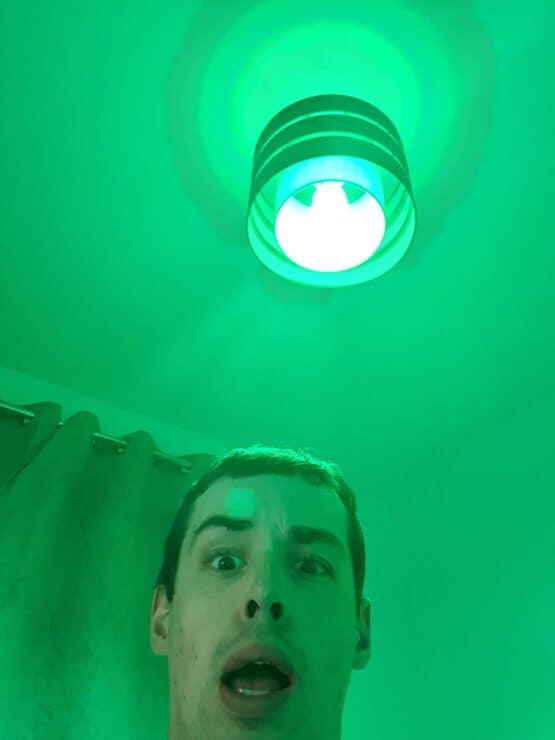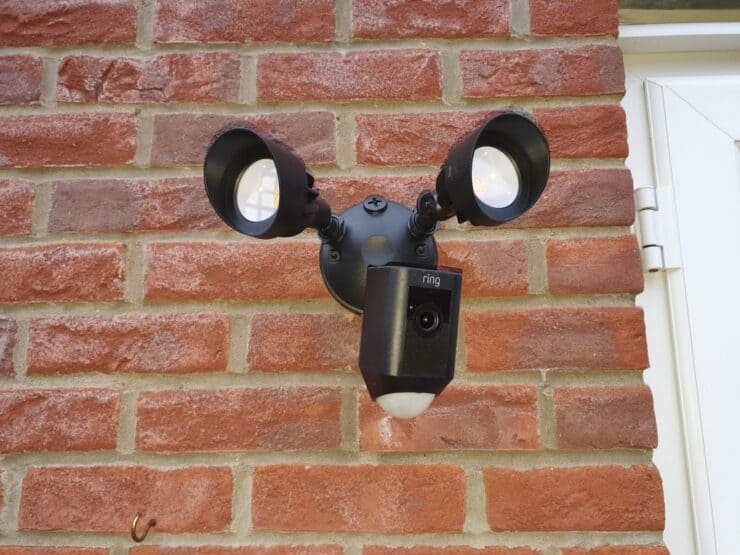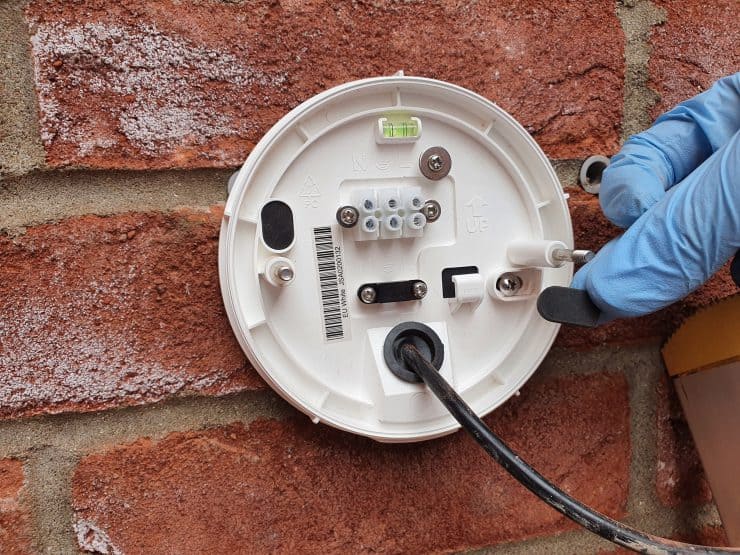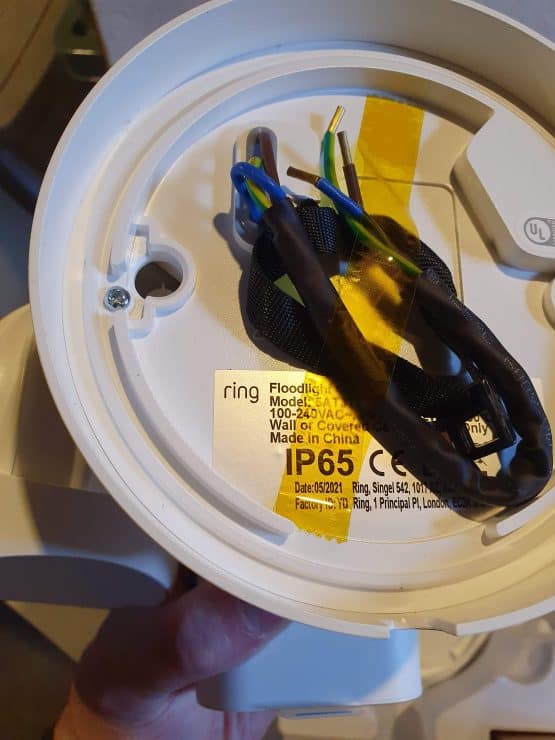Smart light bulbs have changed how we approach indoor lighting, but can they work outdoors?
There’s plenty of reason to want to use your smart light bulbs outdoors. This gives you all the same benefits of indoor smart lighting, but in a setting where smart lighting can be much more valuable. With outdoor smart lights, you can improve the security and safety outside your home just like you did with indoor smart lights.
Yes, you can use smart light bulbs outdoors. You will either need to install a coach light sconce that can offer some protection to your smart light bulbs or buy smart bulbs that are designed to go outdoors.
Let’s get plugged into the illuminating world of outdoor smart lights.
Can You Use Regular Smart Bulbs Outside?
Yes, well, sometimes.
Your everyday indoor smart bulb is not designed to be exposed to the elements. However, you might be able to get away with using your smart bulbs outdoors depending on your specific circumstances.
Your average smart bulb is not designed to stand up to the challenges of being outdoors 24/7. When it comes to being exposed to the elements, water is the biggest enemy of technology. Regular smart LED light bulbs are not designed to be exposed to a moist environment.
In other words, just stick to using them indoors, like I’m doing below (I’m so cool…):

Exposure to water can come in many forms. You not only have to think of how the light bulb will be protected from rain, but you also need to think about how it will stand up to snow, ice, and humidity. These are all challenges that your indoor light bulb was never meant to face.
It’s not just water that you have to consider. Your indoor light bulb is also not built to stand up to extreme temperatures or constant exposure to sunlight. These can all have damaging effects on the overall longevity of your lights.
There are some workarounds that will allow you to use regular smart bulbs outside. However, we’re going to get into these in a little bit. First, we’re going to take a look at what makes our weatherproof light bulb weatherproof.
What’s the Importance of Weather Sealing for Smart Bulbs?
Weather sealing is important for outdoor smart technology, but how does it work?
As with so many things in life, it’s what’s inside that counts. Most of the outdoor and waterproof smart technology is going to look exactly the same as indoor alternatives. Sometimes you might see a more robust case around a device, but they usually look incredibly similar. That’s because the weather proofing happens inside the device rather than outside.
Weatherproofing is commonly achieved by using watertight gaskets inside the device. These prevent water from entering into the housing that contains the electronic components. Water on the outside of smart technology is never really a problem. It’s when water gets in on the inside that’s when things start to break.
Whilst the Ring Floodlight Cam isn’t an indoor light bulb, it’s always important that outdoor products are weatherproofed. For example, note how the two LED arms below are well protected from the elements, with sealed front-facing glass and weatherproofed black surroundings:

Equally the back bracket itself has rubber grommets to protect the entry holes (for the wire, and the screws) from any water ingress:

If you check online forums and message boards, you’ll find stories from people who tried to use indoor smart bulbs outside. Some people have had a lot of success just screwing their regular indoor light bulbs into an outdoor fixture while others have had their bulbs quickly ruined or worse.
When you use an indoor smart bulb in an outdoor setting, you’re rolling the dice. Indoor smart technology is not designed to get wet. You might get lucky and have your indoor light bulb withstand heavy rains, or it might break on its first night out.
So, how can you tell if your smart bulb is weather-sealed?
How Can You Tell if a Bulb is Weather Sealed or Weather Proofed?
Not interested in rolling the dice every time you flip the switch on your outdoor lights? Then you’re going to need some lights that are rated to withstand the weather. How can you tell if your lights are weather resistant?
The first and most obvious, way to tell if a light is weather sealed is also a little misleading. Many manufacturers will sell their lights as being “water resistant” or “weather resistant.” However, terms like “water resistant” are not very tightly regulated. It’s really more of a marketing term.
The best way to tell if your device can stand up to a life spent outdoors is to look for an IP rating. These will typically look something like this “IP68.” You probably have seen a code like that on a watch or another electronic device before.
However, it can be hard to tell what all those numbers and letters mean. Let’s break down IP ratings so that you know what you’re buying.
How to Read Waterproofing Standards

There’s a good chance that your outdoor smart lights are going to come with an IP rating. Don’t let the technical jargon pull one over on you. By the end of this section, you’re going to be explaining IP standards to all your friends.
Well, maybe not, but it’s sure going to come in handy when shopping for new tech!
The first thing we have to talk about are those “IP” letters. This part is actually the easiest. Depending on whom you ask, the IP either stands for International Protection Rating or Ingress Protection. That’s it. Those letters just let you know you’re looking at an ingress protection score.
We prefer Ingress Protection to keep things easy.
Now we get to the numbers. The first number lets you know how well your device can stand up to dust. It’s pretty common for that first number to be a little higher than the second. It’s just easier to get a higher dust protection rating than a higher rating for water.
The dust ratings range from 0—meaning it has no rated protection—and 6 meaning it’s totally dust sealed and features a vacuum seal that has been thoroughly tested.
The second number is your water protection rating. These range from 0, which also means no rated protection, and a high rating of 9. The 9 rating is sometimes noted with a letter “K” instead of a 9 because things can never be that straightforward, can they?
The 9 rating means it has been tested against everything from high pressure, meaning extreme depth, water resistance to high temperature steam.
Your smart lights are probably rated with something like IP44. This is a mid-range level of protection which should be more than enough to stand up to snow, rain, and the occasional stormy day.
Alternatively, something like the Ring Floodlight Cam has a slightly higher IP65 rating – giving extra dust and water protection:

There’s one last rating we need to talk about and that’s the exciting rating: “X.”
Well, X isn’t that exciting. It just means that this device was not tested for that rating. So an IPX4 would mean that the device has a water resistance rating of 4 and was not tested for dust. It’s commonly accepted that X means “0” even though it might be higher in practice.
Now you’re armed with the information you need to breeze through all that marketing lingo and get exactly what you need.
Here’s How You Can Use Regular Smart Bulbs Outside
We can still remember the early days of the Internet of Things where smart home tech was more of a DIY experience than an out-of-the-box product. If you’re itching for some DIY action, here’s a quick workaround that will get your indoor smart bulbs safely working in even the rainiest outdoor climates.
This secret is in your outdoor decor.
You can change the type of sconce that your outdoor light is installed in order to give it some weatherproofing. You need a type of sconce known as a coach light. This provides your light bulb with a protective outer casing that can prevent water from getting into your light:

Coach lights come in a variety of styles. You can find old school coach lights with a Victorian flair as well as modern coach lights. There’s one out there that matches the style for your home.
All you need to do is install your regular smart lights into the coach light of your choice. This will give them a decent level of protection against the elements. However, this won’t entirely protect them from water.
Depending on the couch light you buy, this might not offer much protection at all. It all comes down to the brand of coach light, where do you install it outside your home, and the particular weather that you live in.
The solution should work in most cases, but if you have extreme rainy weather in your area, you might need to get a dedicated outdoor smart bulb.
Use Dedicated Outdoor Smart Lights for a Worry-Free Experience
Philips Hue offers a few products that can solve your outdoor lighting problems right out of the box.
The Fuzo Outdoor Wall Light works with Hue’s bridge. It comes with its own sconce so no need to worry about blending it in with your current decor. It’s an understated, minimalist light, so it should blend in with almost any style.
Best of all, the Fuzo Outdoor Wall Light has an IP44 rating! That means it’s going to be able to stand up to even the most rainy climates. This outdoor smart light comes in a variety of styles to work with your decor.
Philips’ Hue also makes the Outdoor Welcome light. This outdoor smart light is Hue’s answer to the classic floodlight. This is a great choice to park in the backyard in front of the garage:
Philips Hue also makes a range of smart bulbs designed to be installed outdoors. This covers everything from standard issue light bulbs to larger lights designed for bigger illumination.
Maybe you want some tasteful under lighting to go with your new patio? There’s another Hue product that is even better for outdoors.
Smart LED Strips That Can Go Outdoors
The Hue Outdoor Light Strip has Philip’s best IP rating. This LED light strip comes in with an IP67 rating. That means it’s going to stand up to rough weather better than your average siding!
This LED light strip comes in 2 meter and 5 meter strips. It also has white light and color light options. It’s a great choice for adding ambient and more detailed lighting. This is also a good option for people looking for a smarter holiday lighting that can work for everything from Valentine’s to Halloween.
A Newer Alternative: Ring
There’s not many other smart lighting companies that make specific outdoor lights, but Ring – previously a smart doorbell company – are now a competitor of sorts with their range of smart lighting.
Ring makes a variety of outdoor light bulbs including the Ring PAR38. This bulb is meant to fit standard 120 watt sockets. It can work outside in nearly any climate and pairs with the Ring app and other compatible devices. Ring also makes outdoor floodlights and sconces that rival what Hue has to offer.
Their website lists the full range of smart lightings that Ring offer. Just be aware that like you need a Hue Bridge for Philips Hue’s lights to work, you will need a Ring Bridge for their smart lights to work.


Hi, I live in New Zealand. I have just installed a Google Nest Cam and it works great. Also I have bought two Lenovo smart bulbs (E27) 810 lumens as opposed to the Philips Hue brand mentioned.
I haven’t installed them yet as I am not sure if it will interfere with the Nest Cam on my Wifi system. I’m reading very carefully about these bulbs and it appears to be vulnerable to hacking: would that be true?
Hi Ray, thanks for the comment. Your smart plugs shouldn’t interfere with your Wi-Fi no, especially since it is only two bulbs (it might be different if you had dozens of bulbs: these could then overload the router, i.e. result in too many connected Wi-Fi devices).
I haven’t really investigated how easy they are (or aren’t) to hack sorry. Definitely read around more, but unless you find reports for that exact brand of bulb, I wouldn’t worry too much. If they are from a reputable manufacturer (which Lenovo are), they hopefully they have been coded up fairly securely/safely.